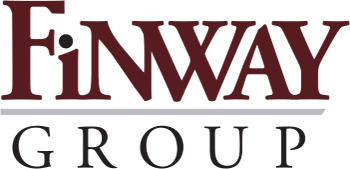Business Owners • Pooled & Multiple Employer Plans

Multiple Employer Plans (MEPS) &
Pooled Employer Plans (PEPS)
Multiple Employer Plans (MEPS) & Pooled Employer Plans (PEPS)
Recent legislation provides for new plan arrangements that can be advantageous to employers seeking a more affordable option to sponsor a retirement plan.
You may have heard of these three categories:
Multiple Employer Plans (MEPs)
Pooled Employer Plans (PEPs)
Group of Plans (GoPs)
Finway Group works with all three types and is expert at helping business owners navigate their choices to find the arrangement that best fits their situation and goals.
MEPs
Multiple Employer Plans (MEPs) have been in existence since the passing of ERISA in 1974. Multiple Employer Plans are not to be confused with Multi-Employer Plans; the two arrangements work differently. MEPs are available in two structures: Open and Closed. Closed MEPs are typically found in a Professional Employer Organization (PEO) or Association Plan where the PEO or Association is the plan sponsor and each employer adopts the master plan. The PEO will also offer one or more benefit services such as Co-Employment, Health, Payroll or other benefits.

Open MEPs
Each employer has a standalone adoption agreement
Potential cost savings from negotiated pricing with service providers
Limited plan design features
Each employer files their own IRS Form 5500
Must carry an ERISA Bond
If over 100 lives, must pay for ERISA audit
Typically, available to any advisor
Closed MEPs
Advantages
Majority of Fiduciary Liability transferred to the PEO
Plan Administration and Fund Selection Fiduciary Liability is the responsibility of the PEO
Only One IRS Form 5500 is filed for all adopters and PEO typically pays for that, including the audit
Employers do not have to carry an ERISA Bond
Disadvantages
Limited plan design capabilities
Minimal, if any, education support
Can be more expensive
Limited to only one advisor
Competitors in market take plans from advisors
PEPs

A PEP is a single plan that is sponsored by a Pooled Plan Provider (PPP). Typically, a business will join as participating employer. A PEP is similar to the open MEP except with additional regulatory requirements to address some of DOL’s concerns from 2012.
Advantages
Outsourcing the majority of the fiduciary responsibilities of plan operations, fund reviews, and selection and filling the IRS Form 5500
Employer still retains some fiduciary responsibility to select and monitor the PPP
Advisor plays an important role in plan design and employee education
All PEPs have a TPA, 3(16) Plan Administrator, recordkeeper, and a 3(38)
Plans typicaly include a directed and corporate trustee
Only one IRS Form 5500 for the entire PEP
No audit until PEP reaches 1,000 lives (exception 100 life plan joins before reaching 1,000)
Employers still need to maintain an ERISA Bond
GoPs
Effecting January 1, 2022. Very similar to a PEP, but the main difference is whoever is sponsoring the GoP is the designated Plan Sponsor and takes on all the administrative, fiduciary, and trustee responsibility and liability.
Employer may have limited plan design options
Advisor plays a minimal role in plan design


